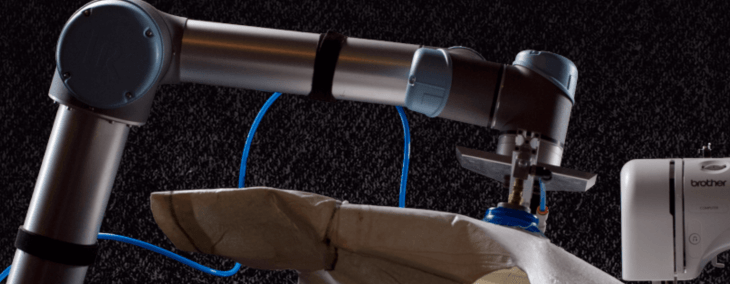Jon Zornow, the founder of Sewbo, made waves in September after announcing that he had built the first robot to sew a t-shirt without human intervention. Using a robot arm and an automatic sewing machine, Zornow took some carefully prepared material and ran it through a pre-programmed series of moves.
It worked. Out popped a t-shirt.
This seemingly simple process is actually wildly important. As we delve further into the discussion of equality and the future of work it’s important to note that the idea of a robot sewing a t-shirt was pretty fun and cute back in September and is now a major talking point. What happens, the world asks, when the jobs usually associated with developing economies and low paychecks further decimate a community through automation? What happens when it doesn’t matter where a product is made because a robot built it and there is little to no overhead associated with the care and feeding of a robot arm?
The sweatshop populated by humans could become a thing of the past, much like the long haul truck, the taxi, and even the delivery van will soon be human free. What happens when the last human-controlled sewing machine goes silent and all of our clothes are made by robots? Will we put a premium on handmade items? Will wearing human-made jeans be a fashion statement?
Sewing a t-shirt with a robot isn’t easy. The problem, in short, is that humans are better at folding fabrics than robots. It took robotics experts ten years to produce a real laundry-folding robot and it’s still not on the market. Add in the vagaries of sewing on an arm or a hemming a pair of pants and you’ve got a human-rich environment.
“Sewbo is the start-up I’m launching to develop and commercialize automated sewing technology. The $500B global garment industry is totally dependent on manual labor and one of the last major industries to adopt some form of large-scale automation,” said Zornow. “The main hurdles have been technical barriers – previous attempts to automate sewing have attempted to accommodate the complexity of handling fabrics with equally complex machines – this has been a challenging approach that’s produced limited results.”
Zornow has taken a different approach with his robot. He’s turned floppy material into hard sheeting – with excellent results.
“We temporarily stiffen the fabrics with a water-soluble thermoplastic. Using off-the-shelf industrial robots and tools adapted from handling sheets of metal, cardboard, and plastic, the stiffened fabric can be cut precisely, molded, and welded to itself. It can then be sewn through and rinsed in warm water to produce a finished garment,” he said.
The company is still small and Zornow is looking to build out the team and get some seed funding. The mission, obviously, is to remove the manual labor from clothing manufacturing, a true disruption that could mean the destruction of thousands of jobs. The garment workers of New York, Chicago, London, and all points West were put out of business by globalization. Now, thanks to a robot arm and some water-soluble thermoplastic, the workers who took up their sewing machines may also soon be obsolete.
